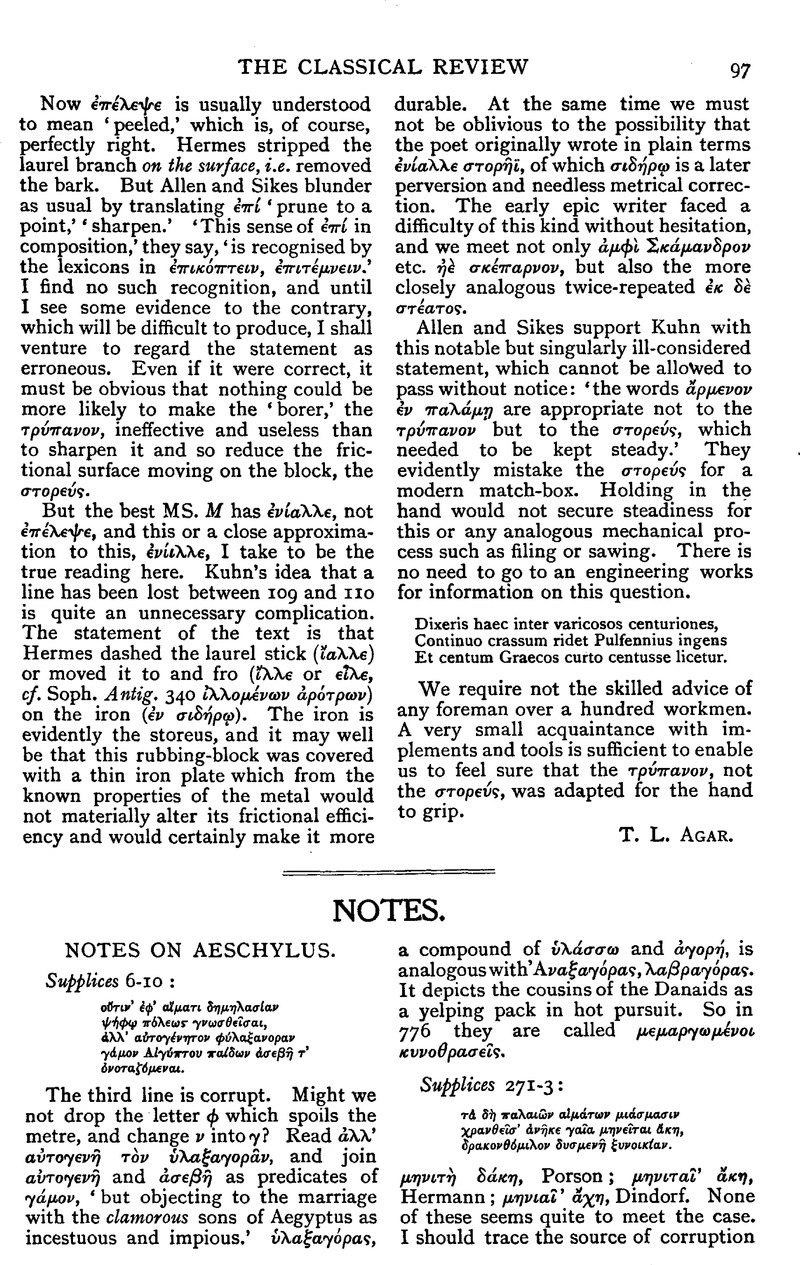No CrossRef data available.
Article contents
Notes
Published online by Cambridge University Press: 27 October 2009
Abstract

- Type
- Notes
- Information
- Copyright
- Copyright © The Classical Association 1921
References
page 103 note 1 Exclusive of cases with enclitic que (I. 14, III. 68, VI. 21, VIII. 34, IX. 59), the last of which at least is counted by Dr. Warde Fowler. These are not pure instances, and the absence of a conflict of word accent and ictus has the effect of softening the harshness of the rhythm. The two cases of the elision of a dissyllabic word (VII. 7, IX. 51) are very doubtfully to be reckoned. If admitted, they would give an earlier position to VII. and IX.
page 103 note 2 Cf. with the average ratio for the Eclogues (1/32·65)—Culex (1/20·7), Lucretius Bk. I. (1/34·87), Georgics (1/100·16), Ciris (1/108), Catullus LXIV. (1/204), Aeneid I.–VI. (1/135·8), on the same basis of calculation.
page 104 note 1 As an example of the difference cf. the smoothness of crudelis tú quoque máter of VIII. 49 and 51 with the original crudelis tú mágis Órpheu (Culex 292).
page 104 note 2 There appears to be a real anomaly here in the position of V., which is generally placed soon after II. and III. (11. 86–7).
page 104 note 3 The cases are: I. 29, 150, 356, 380; II. 20, 49, 82, 308, 321, 447, 458, 486; III. 8, 35, 42, 84, 176, 260, 416, 496, 499; IV. 84, 324, 418, 498.


